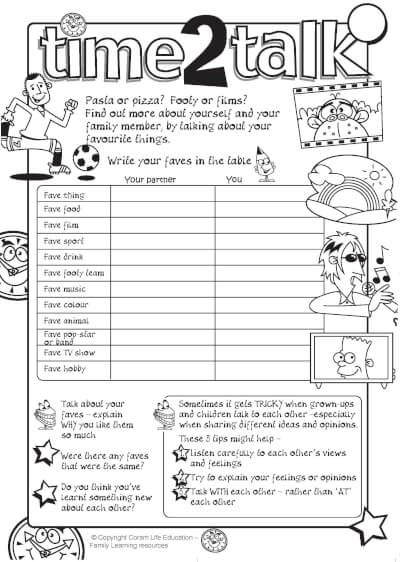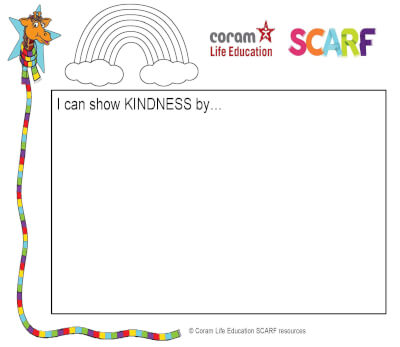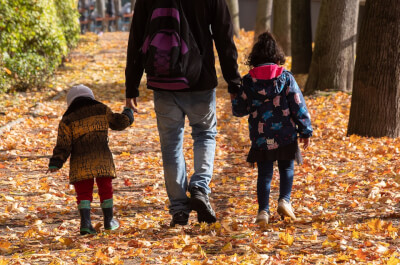SCARF at Home - Activities for 7 to 9 year-olds
What your child will be learning about
- Celebrating difference - in the family and beyond
- Different community groups
- Kindness - how it helps everyone to feel good
- Listening skills
What your child can think about - or for you to talk about, together
- What different groups are there where we live?
- Which groups are we part of, or are other members of our family part of?
- Why might these groups be important to us?
- What kind things can I do - both at home and in our community?
What your child can do - together with you or independently
Activity 1- Time to Talk
How well do you know the people in your life? Friends and family often have things in common, but we are all unique and individual, so there might be lots of things that are different about you and the other people in your family.
It would be so boring if we were all the same. Find someone you know who you’d like to get to know even better and work through these questions together:

Click on the picture to make it bigger, or to print it.
This activity might spark some conversations or even disagreements between you - so remember, respecting other people’s opinions is really important. Enjoy the differences and practise your skills of being polite and kind to each other.
Activity 2 - My Community
The word 'community' can mean different things. Here are two definitions:
- A group of people living in one area
- A group of people with similar interests
A lot of us belong to different communities - at home and at school.
Here are some examples:
- Faith groups (people with the same religion)
- Sports groups (e.g. football, swimming or gymnastics clubs)
- Brownies, Guides, Beavers and Scouts
- After-school clubs - these can be for different interests or hobbies, such as music, art or drama.
Draw a community web - here's how...
You'll need a piece of paper and pencil or coloured pencils.
- Start by drawing a small picture of yourself in the middle.
- Around the picture of you, add pictures or words to show the different community groups you are part of. This can include groups you're in now, or have been part of in the past.
Activity 3 - Acts of Kindness
Being kind to other people helps them to feel good and it makes us feel good, too! You might have noticed sometimes, when you’ve done something kind for someone - perhaps helped them or paid them a compliment - you might have felt good inside.
Some people call it a ‘warm, fuzzy’ feeling. Well, that good feeling comes from chemicals that our brains make and it’s good for our health to feel that way. Have a think about some ways that you can help other people. Draw or write them on this poster (or do both!)

Click on the picture to make it bigger, or to print it.
Maybe you can display the poster somewhere that you and others can see it and it will remind you to carry out those acts of kindness!
Activity 4 - Being a good listener
Listening skills are important for everyone to have – young and old. Play these listening games together to help develop your listening skills!
Simon Says
This classic game is excellent for encouraging children to pay attention and listen to instructions.
Call out instructions by saying, for example, “Simon Says put your hands on your shoulders.”
When you give an example that doesn’t begin with “Simon Says” such as “Stand on one leg!” your child must not do it.
This means that for each instruction, your child must listen for two details:
- Whether or not they must follow the order
- What action they need to do
Do This, Do That
This is a variation of Simon Says.
Standing in front of your child, perform certain actions by saying either “Do this” or “Do that”. For example, you could tap your head, clap your hands or do a jump.
When you say “Do this” your child should copy the action, but when you say “Do that” they should stand still.
It takes a lot of concentration not to move, first listening to whether they should perform the action or not.
Take turns in being the leader.
Go on a Listening Walk
(Only do this if it’s safe to go outside – COVID-19 restrictions.)
This game is great not only for developing listening skills but also for teaching mindfulness and avoiding spending all day listening to the jumble of thoughts someone might have in their head. It's useful for adults, too.
Go for a walk together, in the garden, down the road or to the park. There are usually enough sounds close to home.
Tell each other all the sounds you hear – leaves rustling, a dog barking, a car travelling down a road, a bird chirping, a child crying etc.


